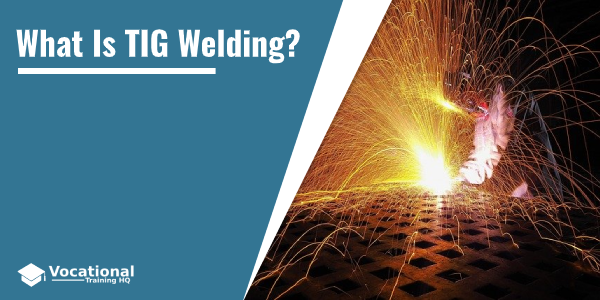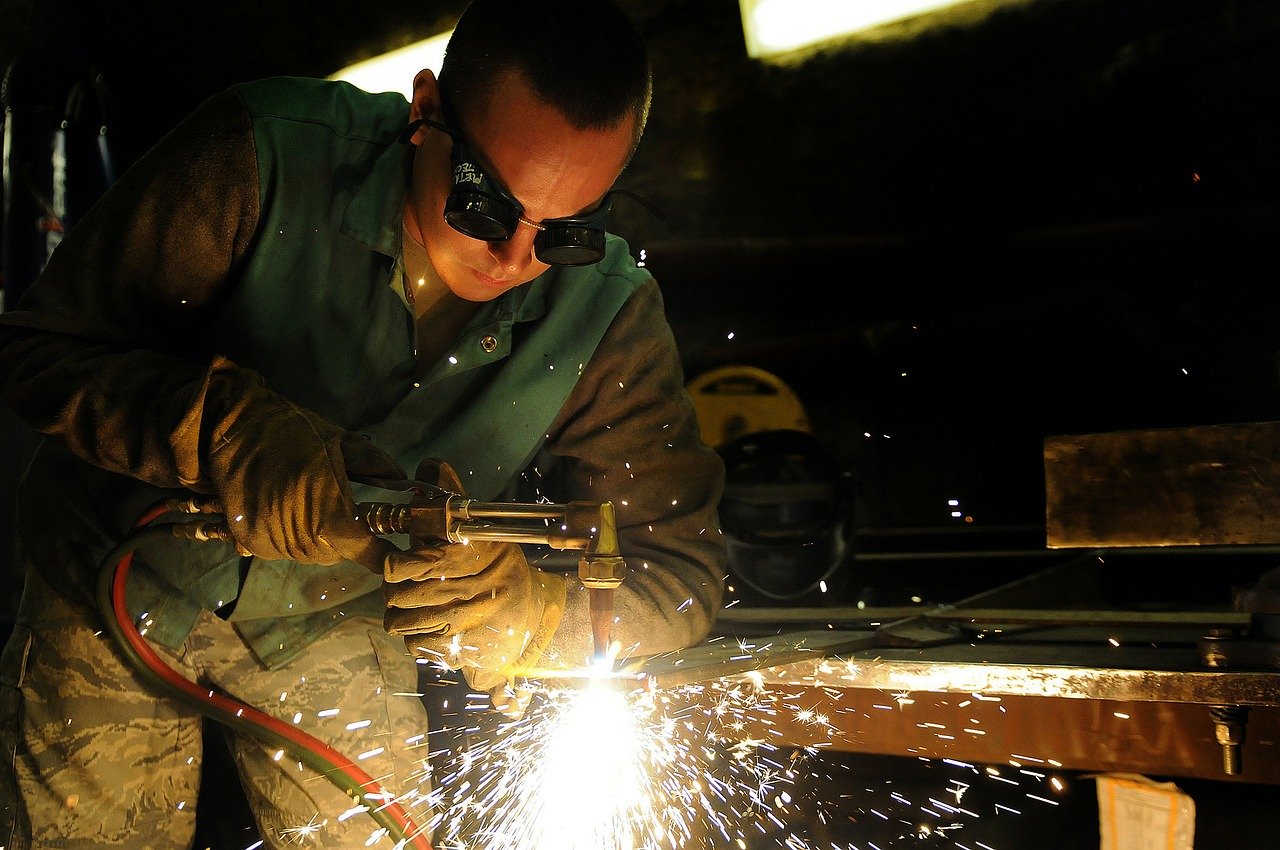Welders use various processes to join metals, and there are at least 67 of them.
The processes differ by the type of pressure, equipment, and heat.
One of the most popular processes is TIG welding.
TIG welding requires a high level of skill but produces high-quality welds.
Article Table of Contents
TIG Welding Definition
TIG welding is another definition of gas tungsten arc welding.
It was created in the 1930s-1940s by the aircraft companies to weld magnesium.
The basic process works as follows: the welder makes an arc between the non-consumable tungsten electrode and the base metal.
This electrode is the type that doesn’t melt.
When the arc hits the base metal, it forms a molten weld pool.
Filler metal in the form of a thin wire is slowly handfed into the pool, where it melts.
During the entire process, the weld pool together with the tungsten electrode is protected from oxygen contamination by an inert shielding gas.
It doesn’t require the use of flux.
As a result, you get a sound slag-free weld with the same corrosion resistance properties as the parent metal.
What Is TIG Welding Used For?
Unlike other processes, TIG welding can be used for more metals.
Because of this, it is applied in a variety of industries.
Widely, it is used in aircraft and spacecraft construction in the aerospace industry.
It is also used by auto manufacturers for its anti-corrosive properties.
Auto body repair shops use TIG welding as well.
The excellent quality of TIG welds is also highly appreciated by artists in sculpture welding.
TIG Welding Advantages and Disadvantages
One of the most essential advantages TIG welding provides is the amount of control.
With a foot or thumb remote control switch, welders can control amperage and heat precisely.
The TIG welder is thin, so welders with great dexterity can have better control of the process.
So, TIG welding is perfect for projects with detailed curves or designs required on the base metal.
Because of the low amperage the TIG welding torch uses, the process is great for thin metal pieces.
TIG welding is a versatile process with the combination of remote control and low amperage, which allows welders to quickly switch between thin and thick pieces of metal.
The fluxes aren’t used, and you can produce a low-profile weld bead, so the weld is free of slag and clean.
The base metal and the arc of flame are separated by small space only, so TIG welding requires a high level of hand-eye coordination and focus.
It requires patience and skills since TIG welding can be time-consuming.
However, with practice and training, welders overcome challenges.
TIG Welding Careers
TIG welding is a challenging but rewarding process.
If you learn to perform it well, you can build a successful career.
Top industries employing qualified TIG welders include construction, petroleum, and aerospace.
TIG welders can even find opportunities in exciting places, such as NASCAR racetracks.
One way to start is to learn TIG welding, which, luckily, is readily available in a variety of welding training programs that teach this technique.
Read the full guide: How to Become a Certified Welder


